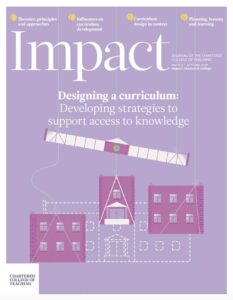Building an innovative, Socratic curriculum for content-heavy subjects
Written by: Jane Evans

8 min read
In most biology departments, a spiral curriculum can be seen in schemes of work (SOW) and in the point order of exam board specifications. For good reason. A subject in which key concepts underpin more complex ideas, such as knowledge of protein structure and function being essential to understanding the selectively permeable nature of cell membranes, requires the teaching sequence to be carefully planned. There should be opportunities to revisit key concepts in different contexts. Typically, biology curricula are well structured: the teaching sequence promotes learning. The potential danger for content-heavy subjects, however, is that pressure to cover the course restricts the development of analytical tools and curtails chances to discuss connections and implications.
In the Philosophy for Children approach (inspired by the Socratic method), it is common to enquire, even with young children, about a question such as ‘What is friendship?’
Join us or sign in now to view the rest of this page
You're viewing this site as a guest, which only allows you to view a limited amount of content.
To view this page and get access to all our resources, join the Chartered College of Teaching (it's free for trainee teachers and half price for ECTs) or log in if you're already a member.
This article was published in September 2018 and reflects the terminology and understanding of research and evidence in use at the time. Some terms and conclusions may no longer align with current standards. We encourage readers to approach the content with an understanding of this context.
0
0
votes
Please Rate this content
Please login to comment
0 Comments
Oldest
Newest
Most Voted
Inline Feedbacks
View all comments










